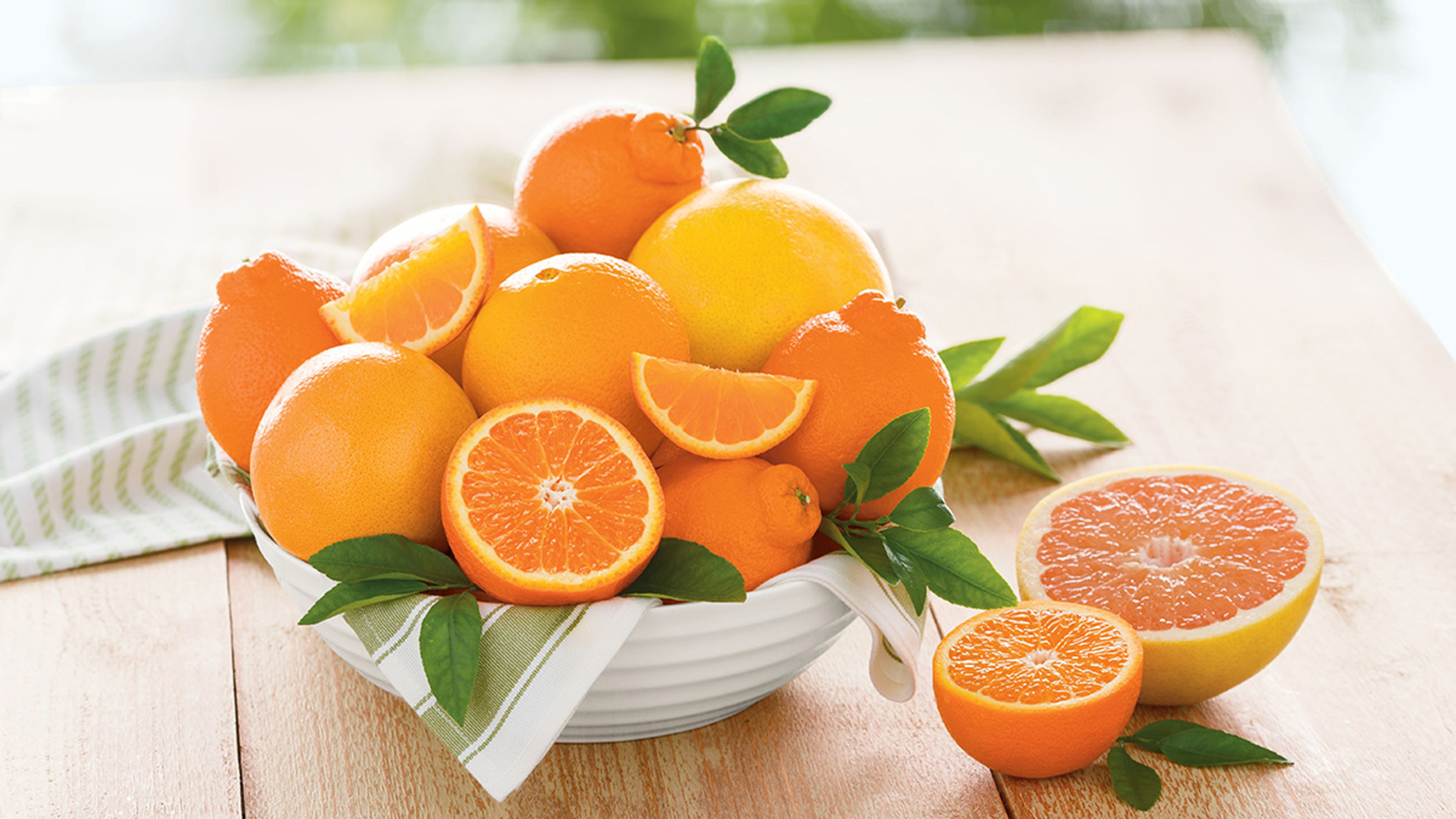Orange Crush: 8 Things You Didn't Know About America's Most A-Peeling Fruit
Does any word rhyme with the king of the citrus world? Keep reading to find out.
Jan 04, 2022
Oranges are among the most popular and widely eaten fruit in the United States. American citrus growers produce nearly 4 million tons of oranges annually. The USDA estimates that the average American eats nearly 15 pounds of fresh oranges — and consumes 72 additional pounds of oranges in juice form — each year. That's a lot of pulp! And that's not counting all the other delicious ways we work oranges into our diet — in salads, in savory dishes, in baked goods, even dipped in chocolate!
Here are more facts about oranges that might surprise you about this remarkable winter fruit.
Juicing up Spain
Oranges are becoming an important part of the power grid in one tiny part of Europe. In the picturesque southern Spanish town of Seville — known as the home of flamenco dancing — tens of thousands of oranges grow naturally every year on the city's 48,000 orange trees. But while the fruit blossoms give Seville a lovely scent during the summer, they sadly are too bitter to eat. Sevillanos end up throwing away millions of pounds of unwanted oranges each winter.

To combat the problem, engineers within the city have found a way to use the methane created by the rotting fruit to generate electricity. Although still in trial phases, officials believe that when the plan is fully implemented, those unwanted oranges could generate enough electricity to power more than 73,000 homes!
Ancient fruits
Horticulture experts believe oranges originated in the tropical regions of southeast Asia, in an area known as the Malay Archipelago — the scattered islands located between mainland China and Australia and including the countries of Indonesia, the Philippines, and Singapore.
Historical records show oranges were grown in India as much as 7,000 years ago and later spread to China around 2500 BC. From there, Roman traders brought oranges to Europe, and they then spread along the Mediterranean and into Africa.
Three of a kind

There are over 600 varieties of oranges. The three most common found in grocery stores are navel, Cara Cara, and blood oranges, according to Christina Ward, senior director of global marketing for Sunkist Growers. Navel oranges get their name from the “belly button-like" indention that develops around the fruit's blossom. Cara Cara oranges look like navels but are pinker inside when peeled. And as their name suggests, blood oranges get their name from their intense maroon interior.
Keep the doctor away
If you want to support your immune system, skin, and eye health, then you should eat a serving of citrus every day, says Elizabeth Ward, a registered dietitian, author, and recipe developer. “In addition to vitamin C and potassium," Ward says, "oranges supply key carotenoids — beneficial plant compounds — that help protect your cells and reduce inflammation." Oranges also contain a compound called hesperidin, which has been shown to help strengthen the immune system.
The tree of life
The next time you eat an orange, consider this: The tree from which the fruit in your hand came may have also produced oranges your father ate. And possibly even his father before him.
“People are often surprised by the lifespan of a commercial orange tree," says Eric Bream, president of California's Bream Family Farms and a third-generation citrus farmer himself.
“It takes about three or four years from planting until you get your first harvest from an orange tree, and about 10 years before they go into full production," he says. “But, after, they can keep producing for 50 or 60 years — or longer. I'm still farming trees that were planted in 1912. In my area, that's not all that uncommon."

Consider the rind
Whether you're making juice or just eating an orange raw, be sure to keep the peel. In commercial facilities, orange peel has an incredible number of uses. It's a key ingredient in marmalades, potpourri, kombucha, cosmetics, and even some cattle feed. And you can put those potent peels to work in your own home as well.
You can use grated citrus zest as a homemade face scrub or to help deodorize your trash. Soaking citrus peel in vinegar creates an all-natural, all-purpose cleaner. And when it gets chilly out this winter, dried citrus peel also makes a perfect (and fragrant) bit of kindling for starting fires.
Orange is the new...orange?
In the great debate of what came first, the fruit or the color, it turns out orange was a fruit first. According to Sunkist's Ward, “the origin of the English word 'orange' [which was first used in the 1300s] comes from the Sanskrit term 'naranga,' which means 'orange tree.'" The color orange came about 200 years later, in the 1500s. Before the color orange existed, most people referred to the hue it now represents as “red-yellow" or “yellow-red." Orange you glad that confusing term went away?
Does any word rhyme with orange?
The word "orange" is notorious for being one of a handful of English words that is virtually unrhymable. Good thing for ye olde dictionary. A handful of words rhyme with the second half of orange, such as hinge, cringe, and lozenge. But if you're looking for a true full-on rhyme for your next piece of citrus-inspired poetry, Merriam-Webster says only one real and legitimate word perfectly rhymes with orange: "sporange" — the word named after the structure in fungi, algae, mosses, and ferns where spores are produced. Rap on that one for a bit!
.svg?q=70&width=384&auto=webp)







